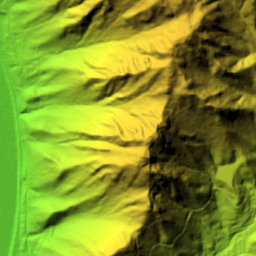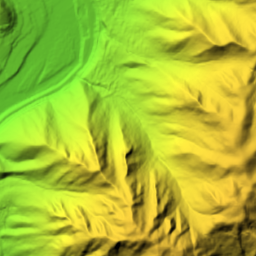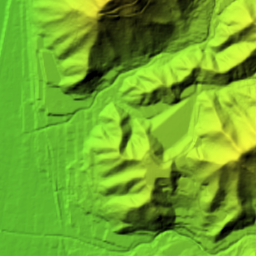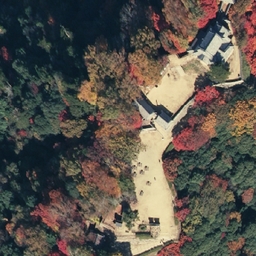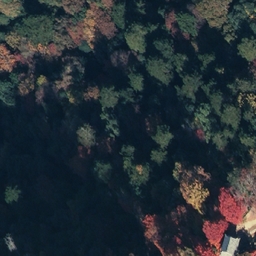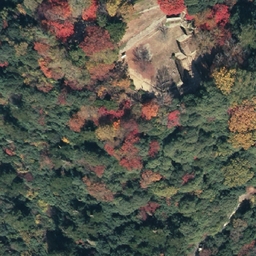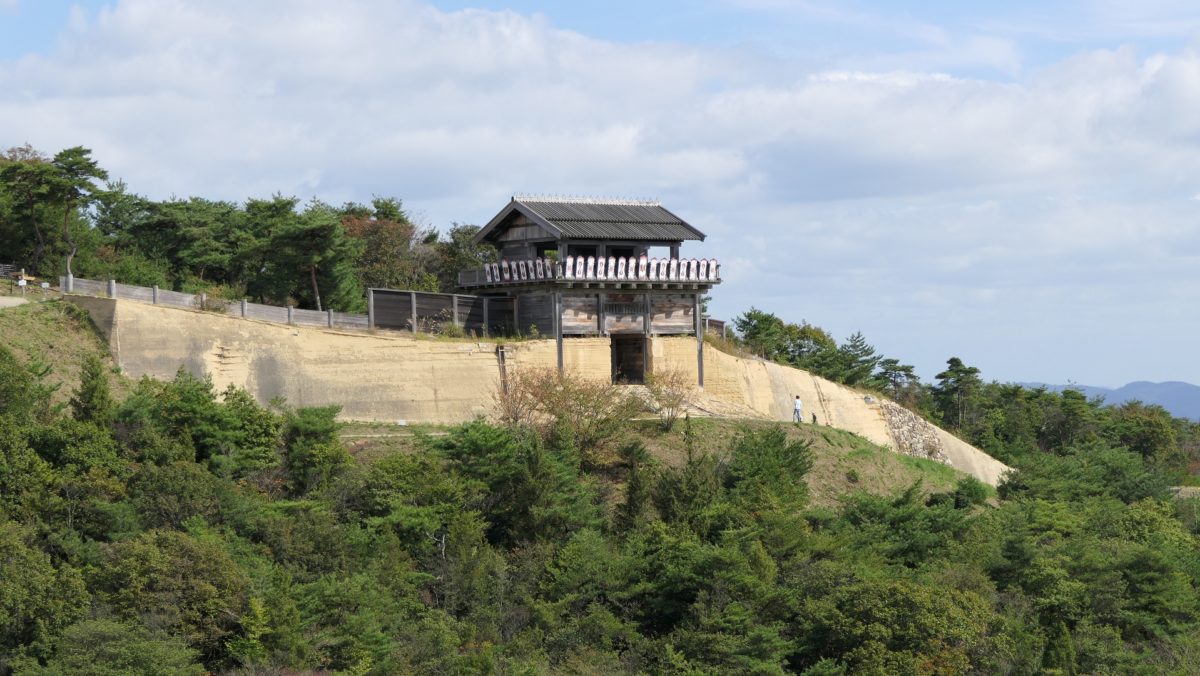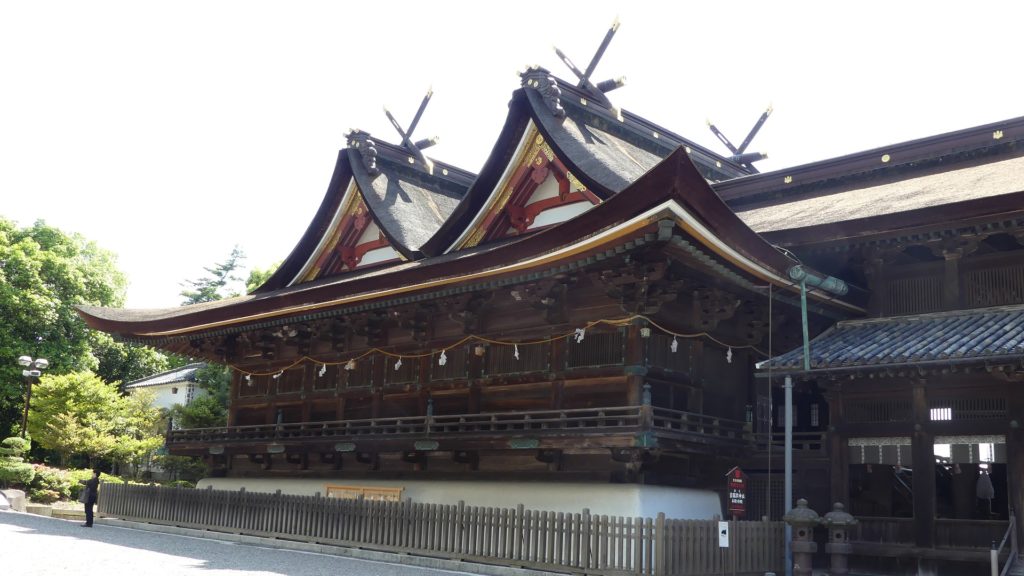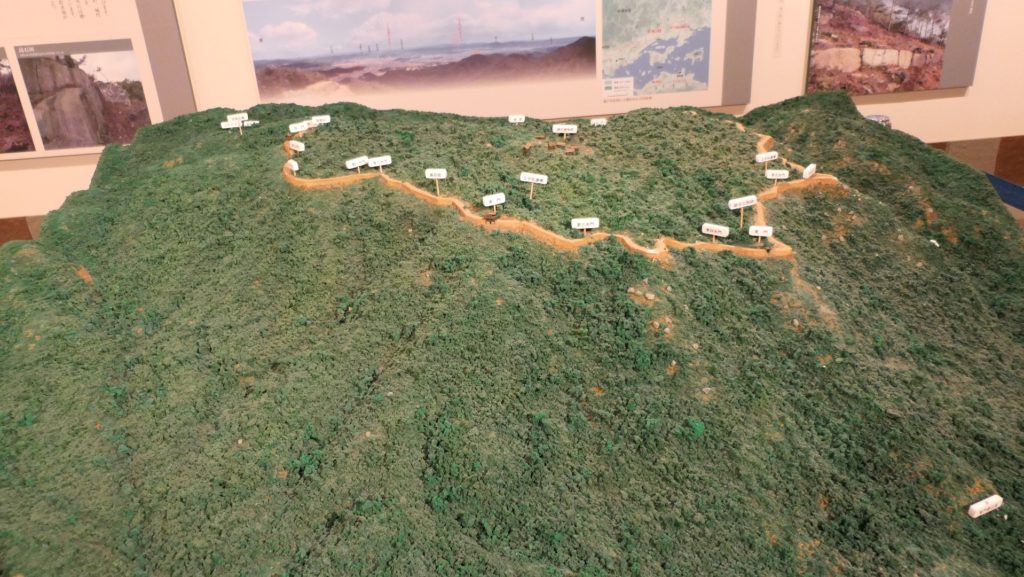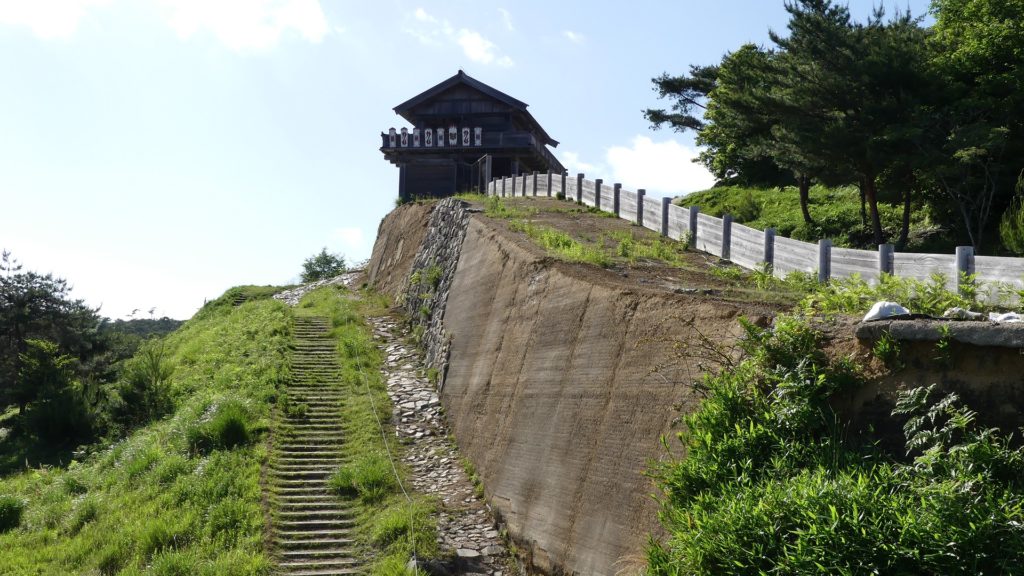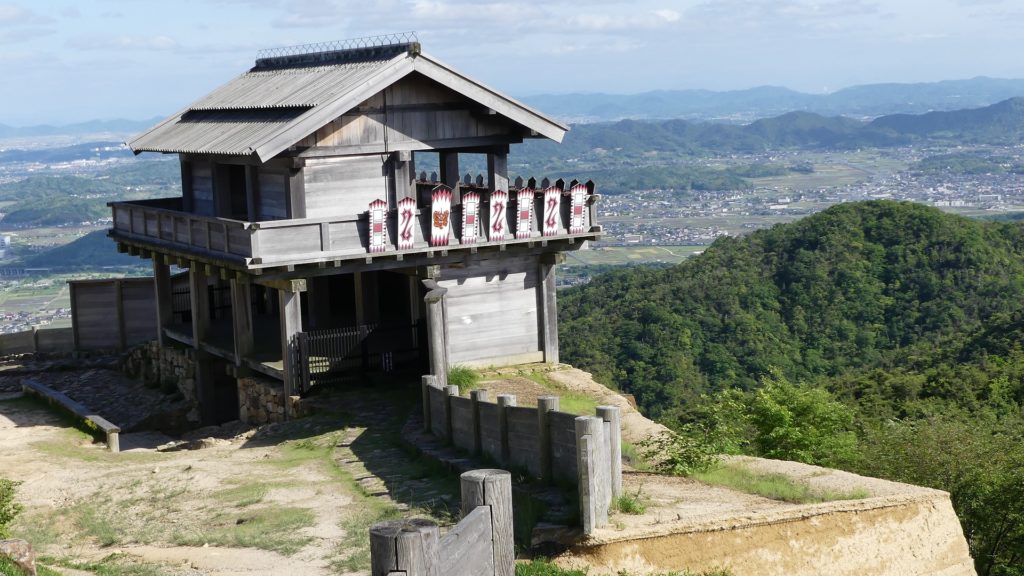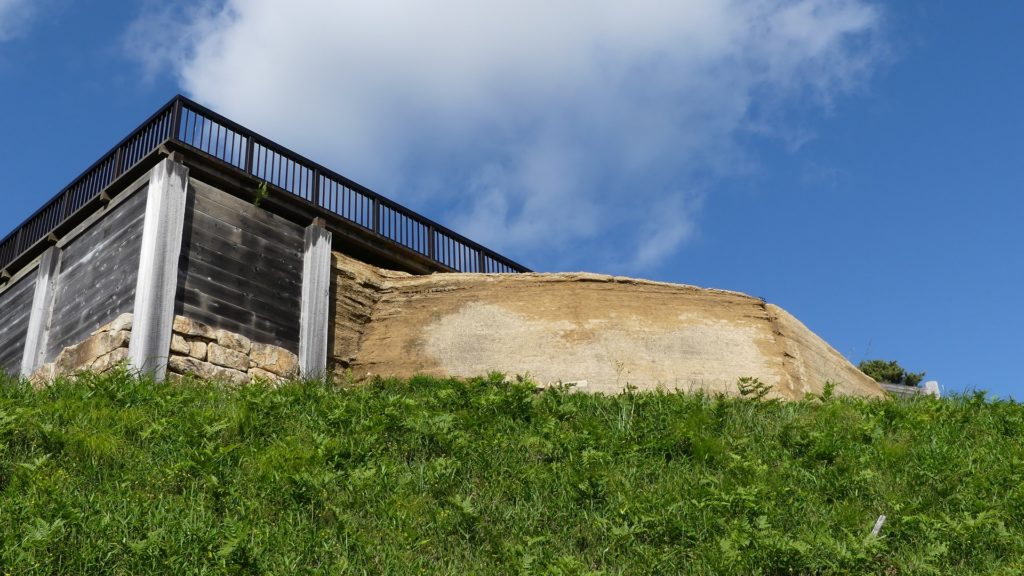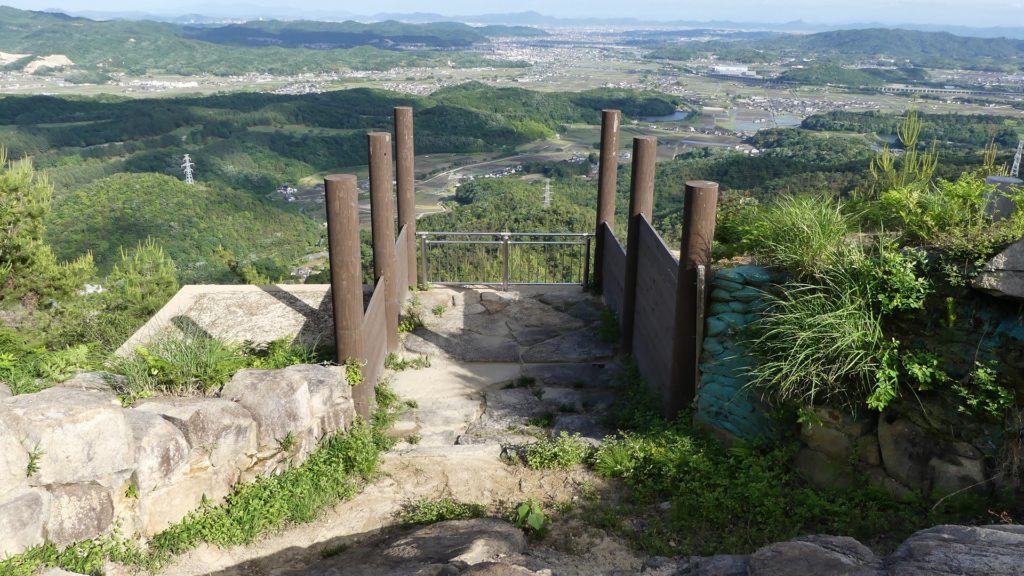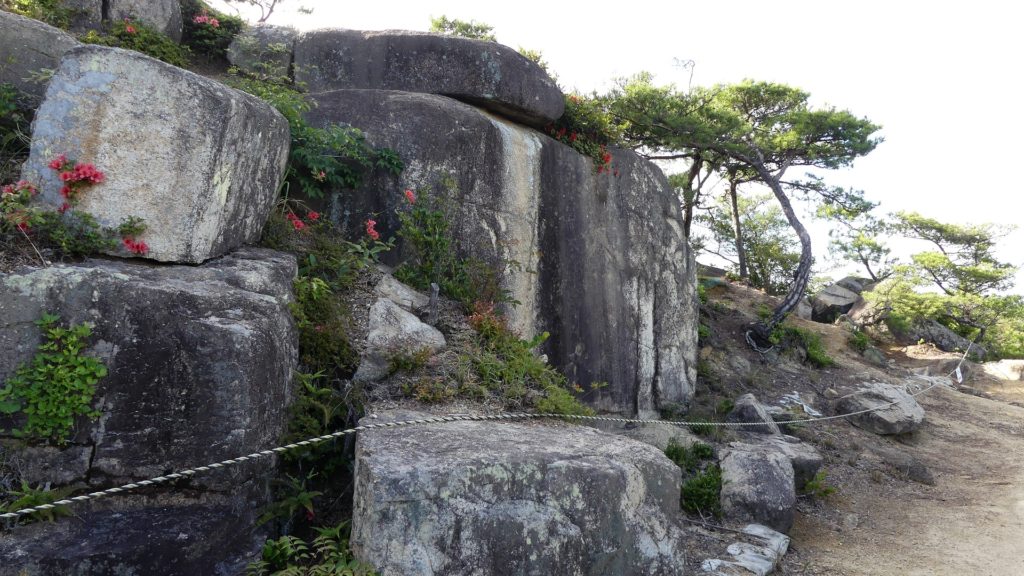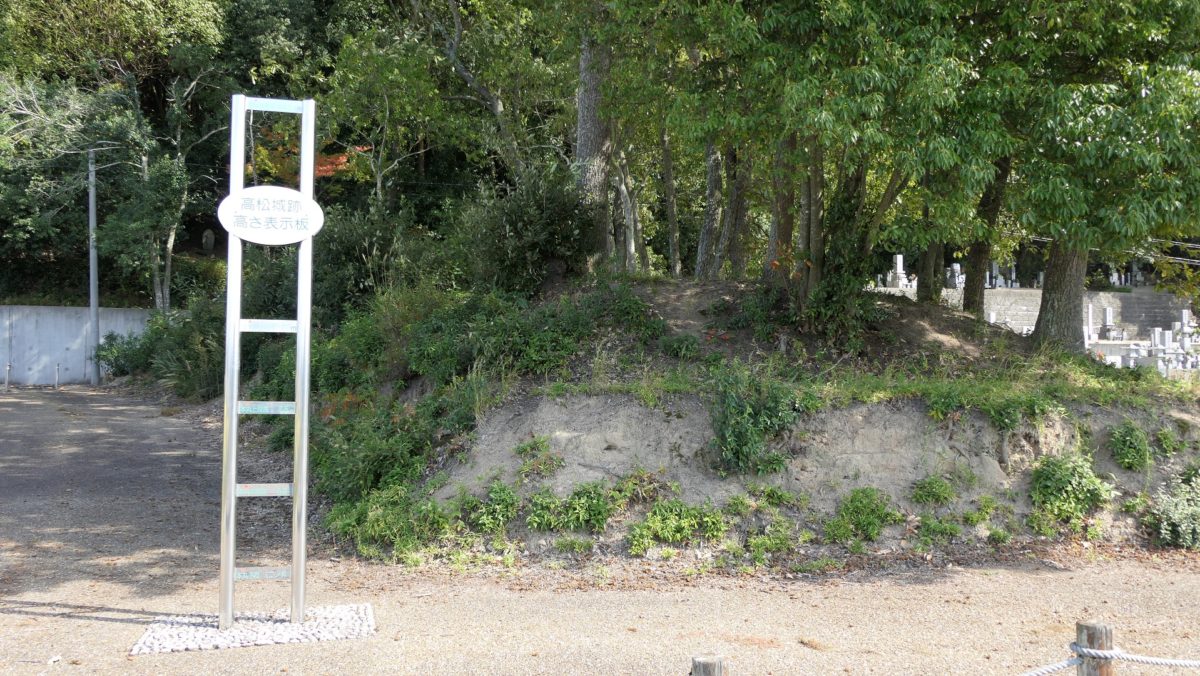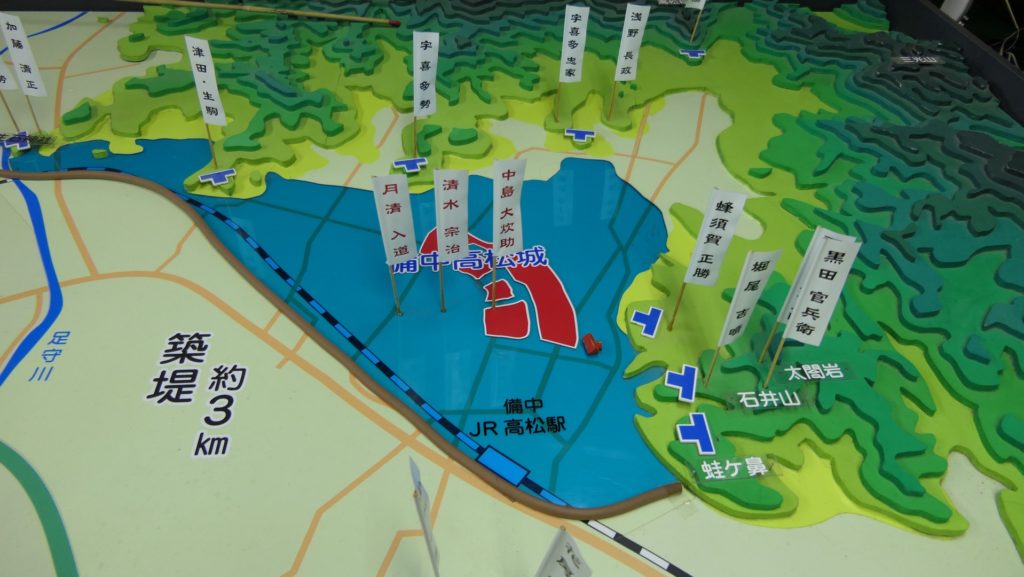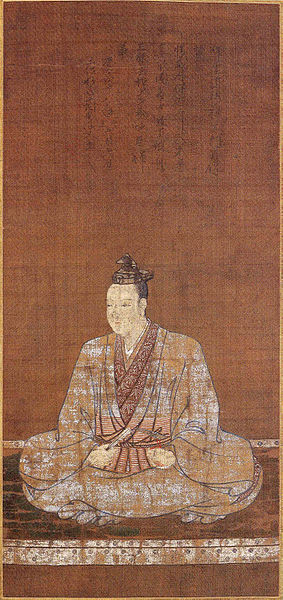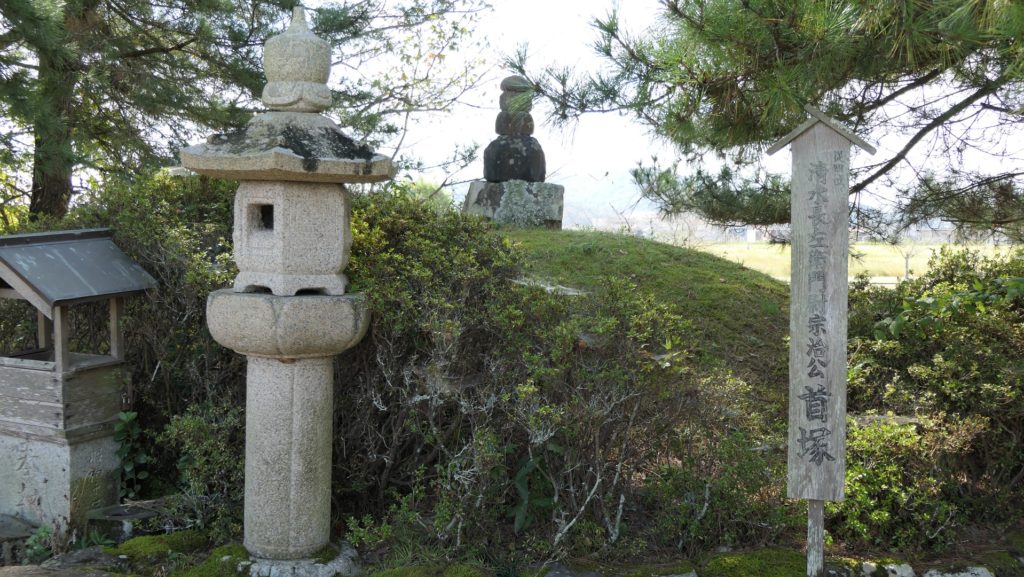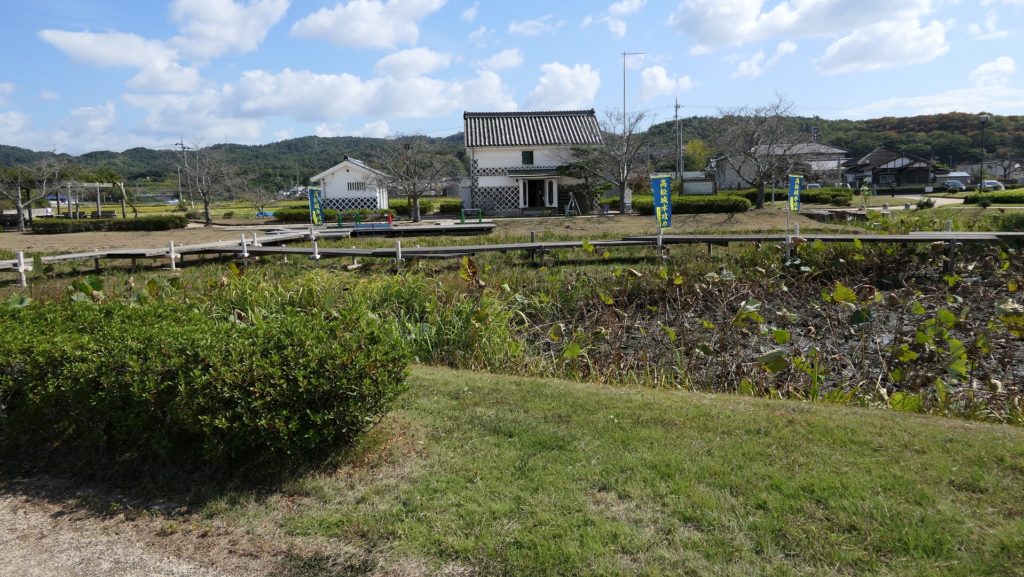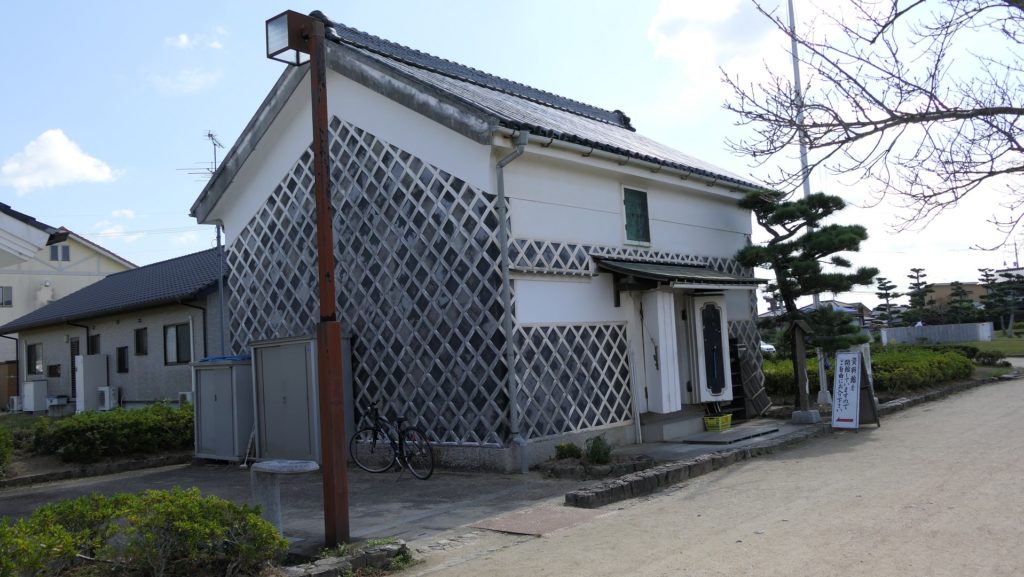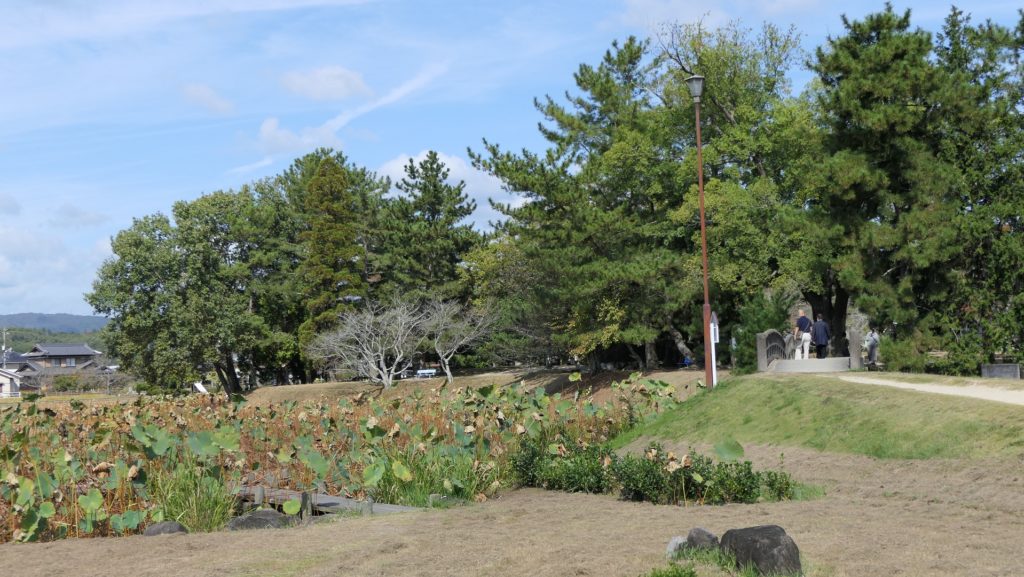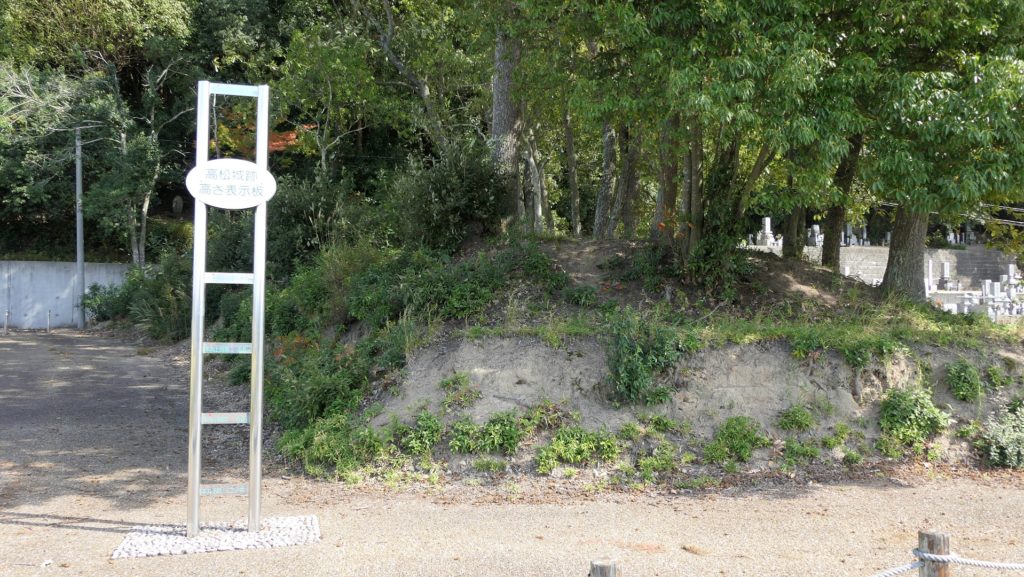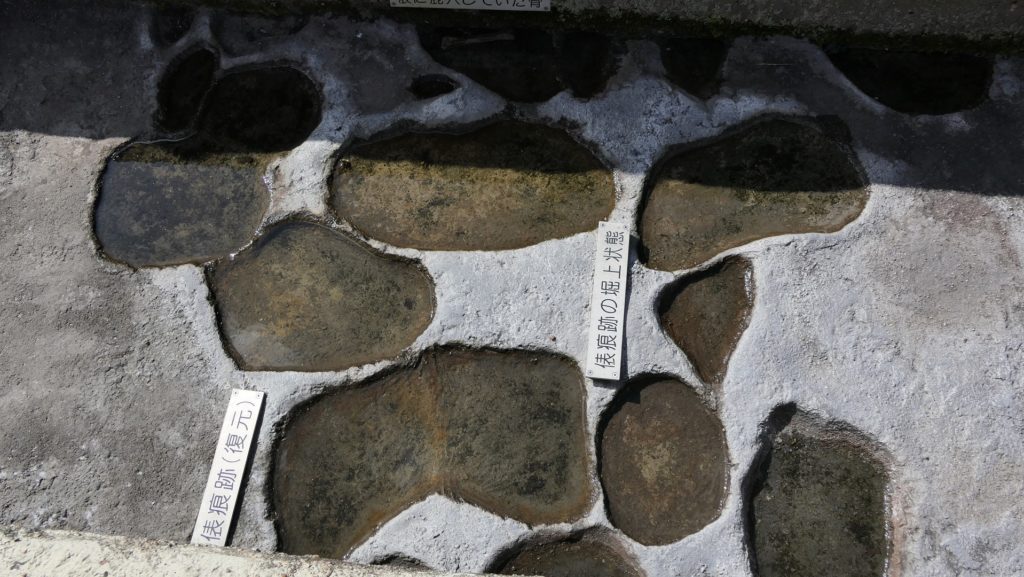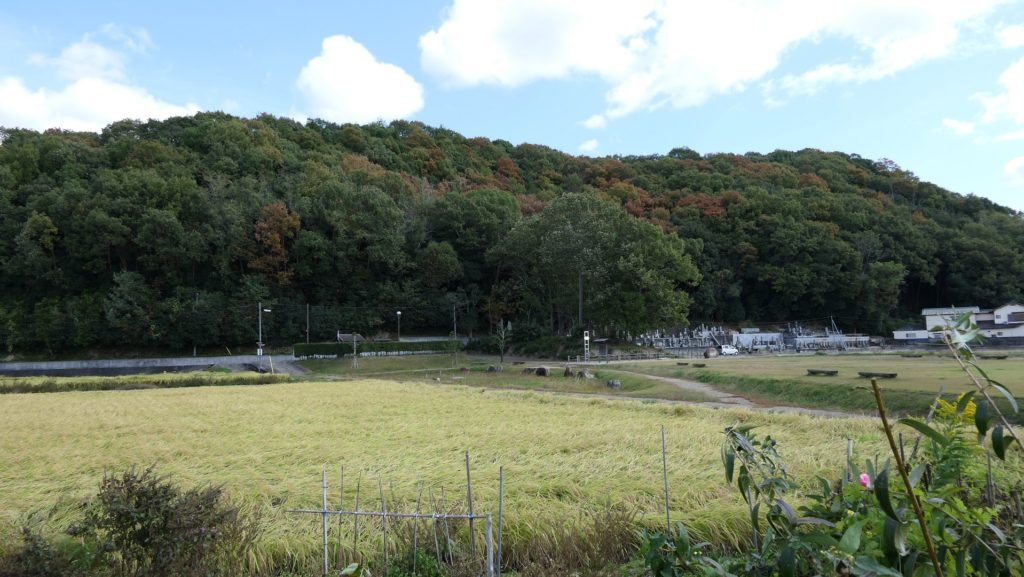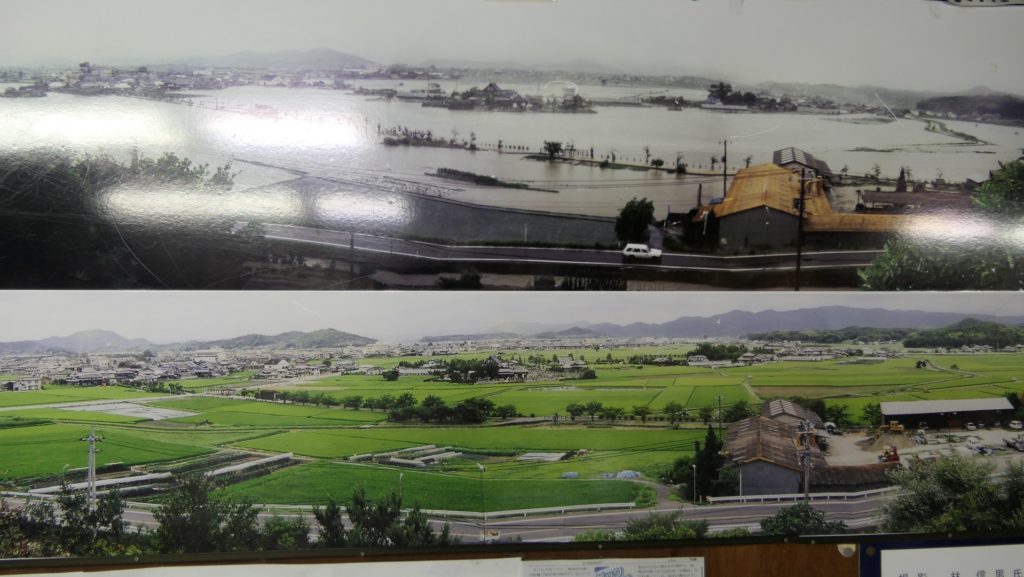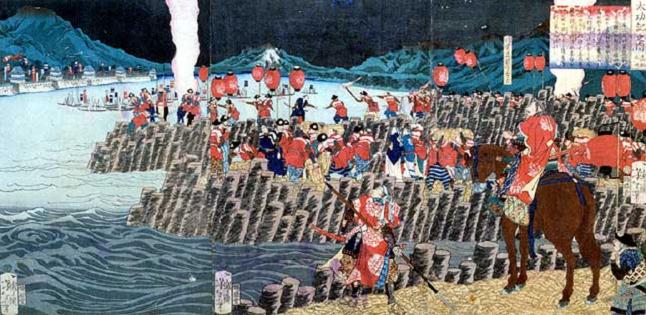立地と歴史~Location and History
山の上に広がった城~Castle spread over Mountain
備中松山(現在の高梁市)は備中国の中心に位置していました(現在の岡山県西部)。中世の初期から多くの領主たちがこの地を重要視し、その帰趨をめぐって互いに争ってきました。
Bicchu-Matsuyama (what is now Takahashi City) was located in the center of Bicchu Province (the western part of now Okayama Prefecture). Many lords considered this area important and battled each other over it since the first Middle Ages.
備中松山城は最初、臥牛山という4つの峰を持つ山の上に築かれました。初期の城は、大松山という奥の峰に築かれ、そして他の峰にも広がっていきました。私たちが通常備中松山城といっているものは、小松山と呼ばれる手前から二番目の峰に築かれています。
Bicchu-Matsuyama Castle was first built on a mountain called Gagyu-san which has four peaks on it. The first castle was on the back peak called Omatsuyama, then it was spread to the other peaks. What we generally call Bicchu-Matsuyama Castle is on the second peak from the front called Komatsuyama.
めまぐるしく変わる城主~Lords were changed several times
戦国時代には、三村氏が主にこの城を確保していました。1561年に、毛利氏の配下であった三村家親が尼子氏からこの城を奪ったのです。それ以来、城をめぐって幾重にも戦いがありました。家親の息子、元親は毛利に反旗を翻し、織田信長と同盟を結びました。しかし1575年毛利氏によって滅ぼされてしまいます。それまでには、小松山がこの城の中心地になっていました。
In the “Sengoku” or Warring States Period, the Mimura Clan mainly held the castle. Iechika Mimura under the Mori clan took away the castle from the Amago clan in 1561. Since then, several battles happened over the castle. Iechika’s son, Motochika formed an alliance with Nobunaga Oda against Mori, but was lastly beaten by Mori in 1575. The Komatsuyama peak became the center of the castle until then.

その後、この城は毛利の重要拠点でしたが、1600年の関ヶ原の戦いにおける毛利の敗戦により、徳川幕府に奪われてしまいます。城は一旦放棄されますが、江戸時代になって小堀、水谷といった大名が城と城下町を統治しました。城は再び修理され、拡張され、そして完成したのです。
After that, the castle was an important site for Mori, but it was taken by the Tokugawa Shogunate in 1600 due to Mori’s loss in the battle of Sekigahara. The castle seemed to be once in ruin. In the Edo Period, several lords such as the Kobori and the Mizunoya clans governed the castle and castle town. They repaired, improved, and completed the castle again.
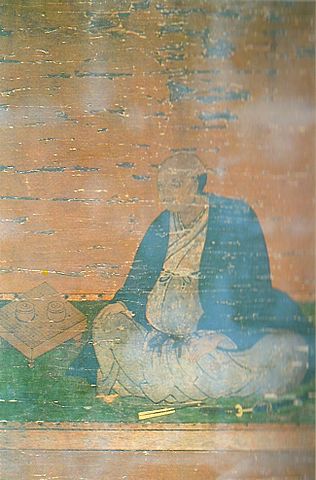
山裾に御殿~Hall on Foot of the Mountain
大名たちは通常山の麓にある御根小屋と呼ばれた御殿に住んでいました。政治を行うのに便利だったからです。江戸時代後半には、人々は麓にある御殿を「御城」と呼び始め、山の上にある方を「御山城」としていました。
They usually lived in the main hall called Onegoya on the foot of the mountain, because it was convenient for governance. In the late Edo Period, people started to refer to the hall on the foot as “the Castle” than the castle on the mountain as “the Mountain Castle”.

特徴~Features
城への道のり~Route to the Castle
(自分でそこしか行っていないため、今回は小松山の峰にある備中松山城の主要部分のみご紹介します。)
車で備中松山城に行かれる場合は、山を登る途中の駐車場に車を停めなければいけません。そして、そこからシャトルバスに乗り換えるか歩くのです。シャトルバスは、一番手前の峰、前山近くのふいご峠まで行きます。そこからは誰しもが城まで歩くことになります。中太鼓櫓跡を通って、約30分の道のりです。
( I will introduce only the main part of Bicchu-Matsuyama Castle on Komatsuyama peak, because I have only been there.) If you drive to Bicchu-Matsuyama Castle, you have to park at the parking lot half-way up the mountain. Then, you will transfer to the shuttle bus or walk. The shuttle bus goes to Fuigo Pass near the front peak called Maeyama. Everyone has to climb up from the pass to the castle. it takes about 30 minutes on foot going through the ruins of Nakadaiko Turret.
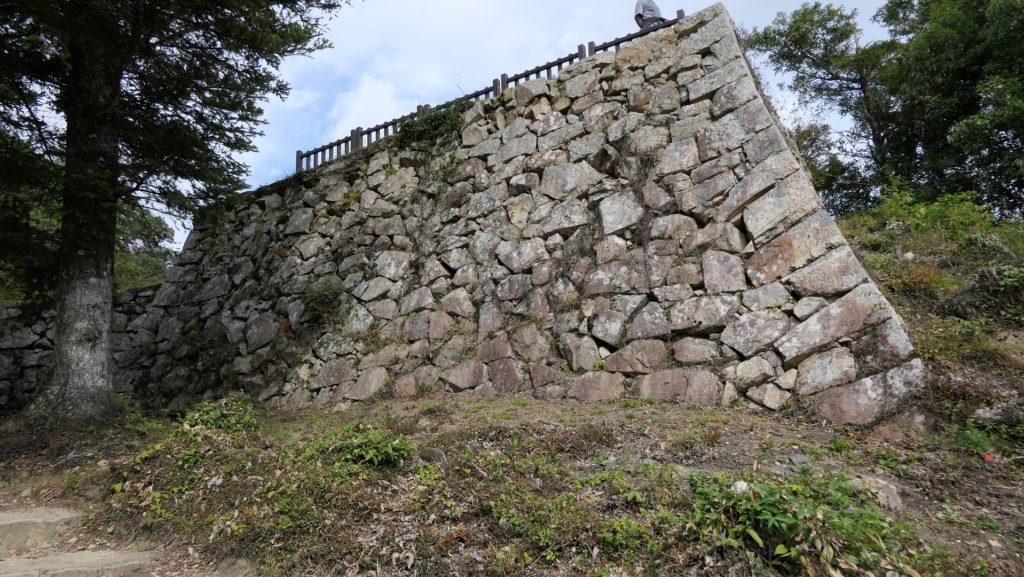
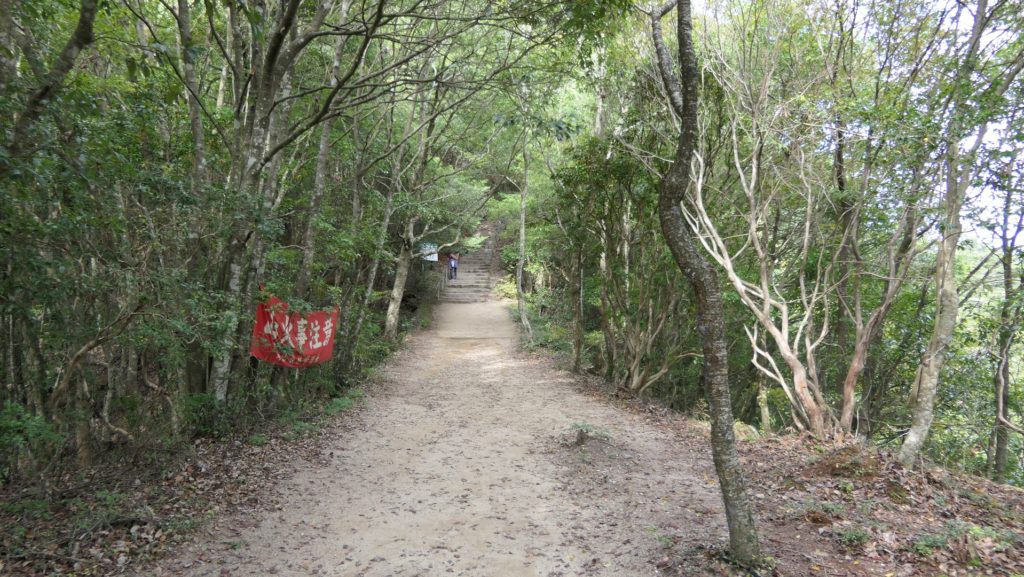
素晴らしい石垣~Wonderful stone walls
城周辺の航空写真~The aerial photo of around the castle石垣と自然石の組み合わせに驚かれるかもしれませんが、そこは三の丸の入口である大手門の跡になります。三の丸からは、二の丸へと続く、折れ曲がり且つ石垣に囲まれた通路が続きます。これも壮観です。二の丸に至ると、いよいよ本丸が見えてきます。
You may be surprised to see the combination of stone walls and natural stones. It’s the ruins of the Main or Ote-mon Gate which is the entrance of the Third Enclosure or “Sannomaru”. From the Sannomaru, you will also see the route to the Second Enclosure or “Ninomaru” zigzagged and surrounded by stone walls. It also looks great. In the Ninomaru, you can finally see the Main Enclosure or “Honmaru”.
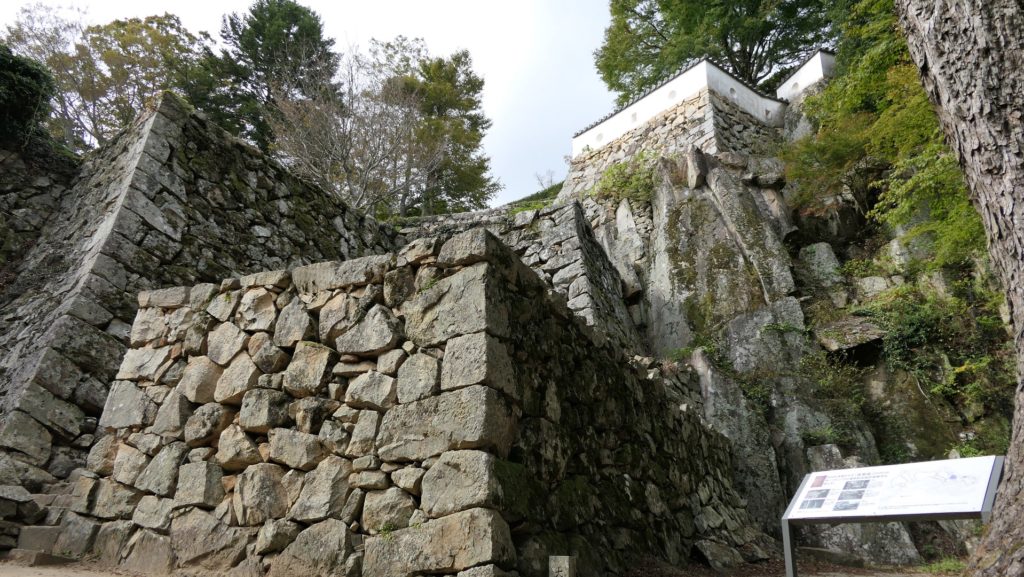
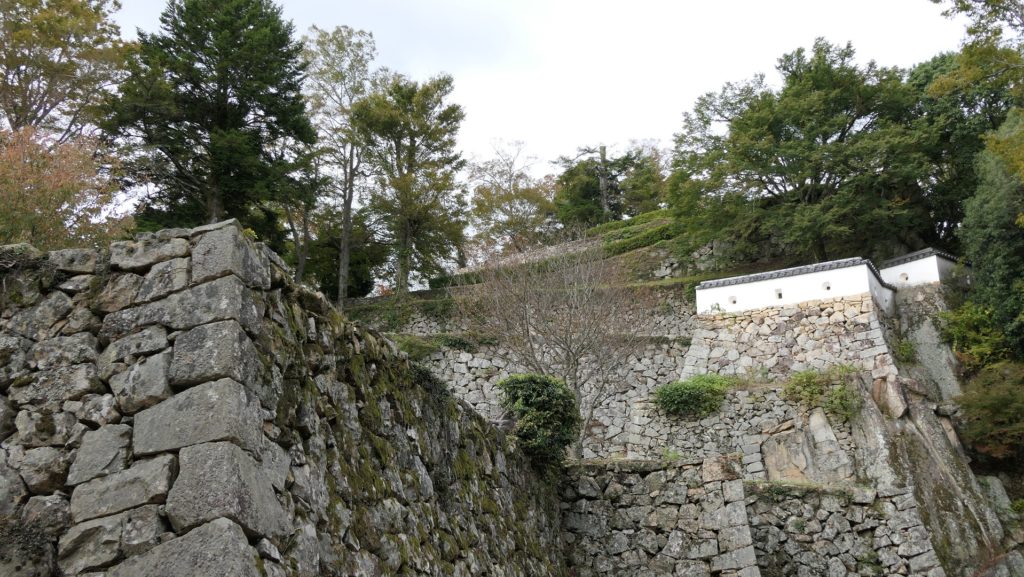
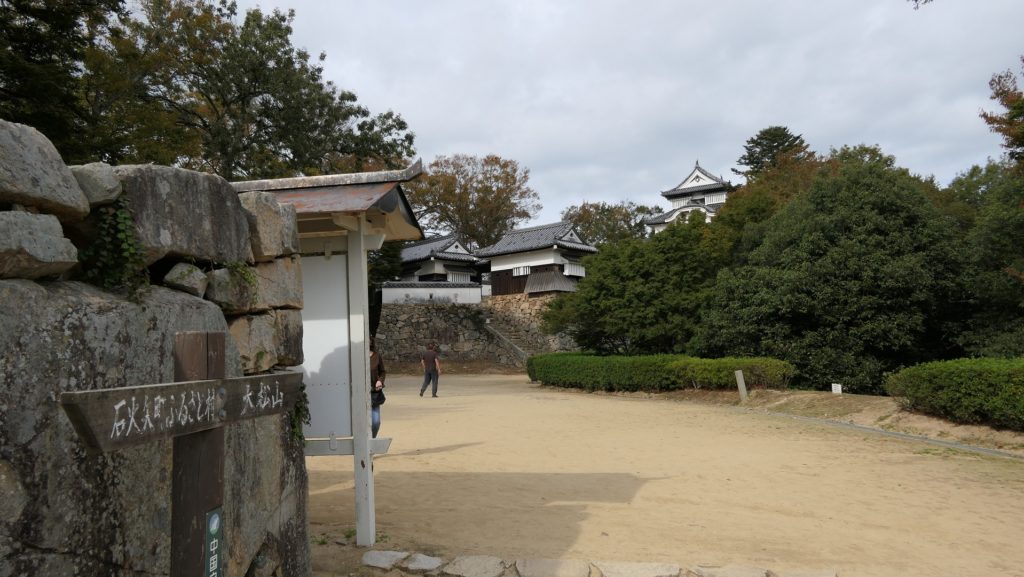
本丸と天守~Main Enclosure and Main Tower
本丸には天守と3基の櫓があります。天守は、日本で12ある現存天守の内の一つで、山城の中では唯一のものです。2階建てで高さは11mありますが、12天守の中では最小です。しかし、ごつごつした岩山とよくマッチして重厚に見えます。
Honmaru has the Main Tower or “Tenshu” and three turrets. The Tenshu is one of the 12 remaining ones in Japan and the only one on mountain castles. It is two stories and 11m high which is the smallest one among the 12 Tenshu. However, it matches the rocky top of the mountain and looks heavy.

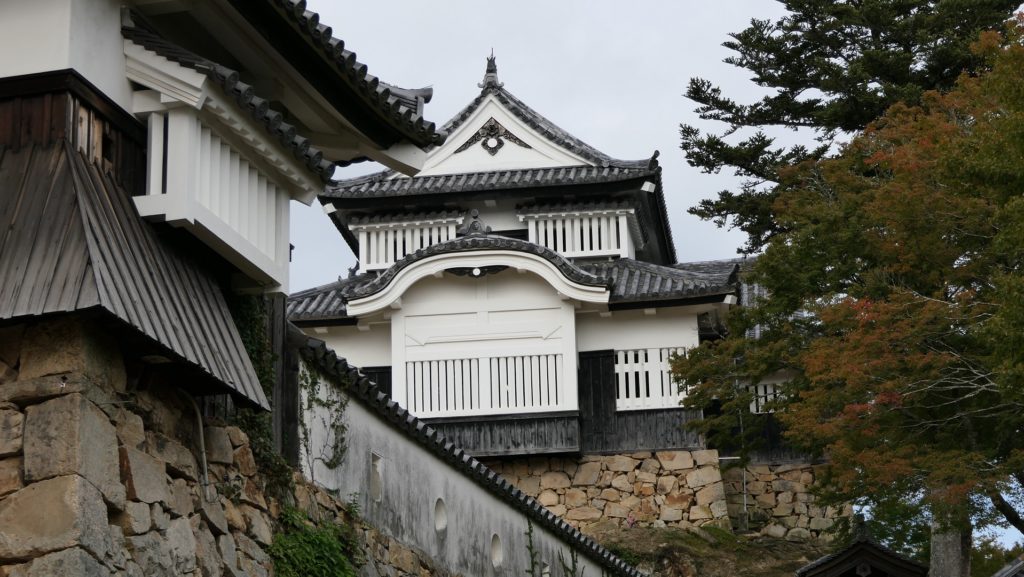
櫓は2階建てのものが一つと、単層のものが二つあります。よく調和しています。天守の中には入ることができ、内部は簡素で実用的です。1階には、囲炉裏と城主のための装束部屋があります。2階には神棚があり、一説には最後の時を迎える時のために準備されたものといいます。頂上からの眺めがよいことは言うまでもありません。
The turrets are also a two story one and two single story ones. They have a good valance. You can enter Tenshu. The inside of it is simple and practical. There is a fireplace and a dressing room for the lord at the first floor. The second floor has a Shinto altar. It is said that they were prepared for the lord’s last battle. Of course, the views from the top are very good!
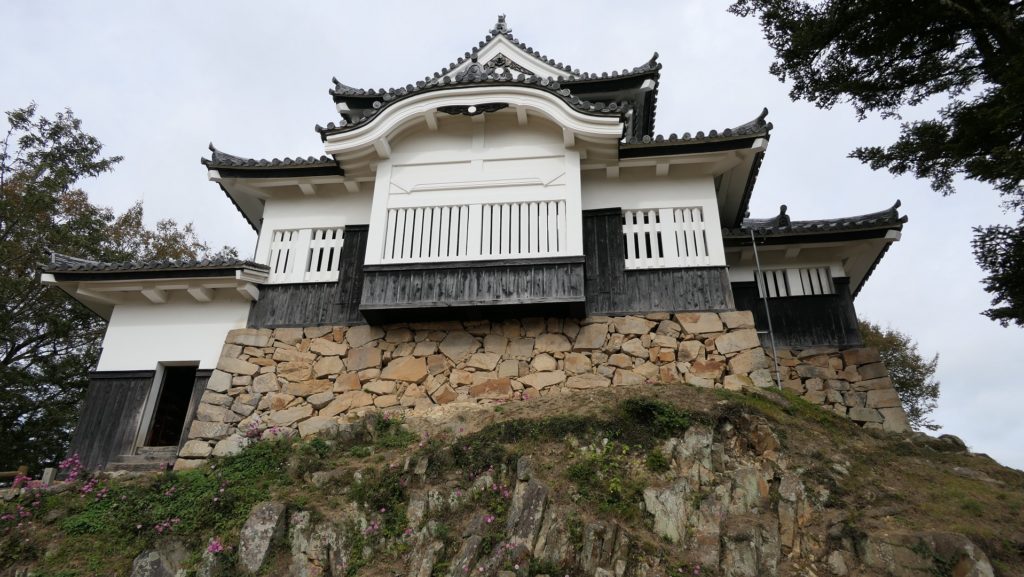

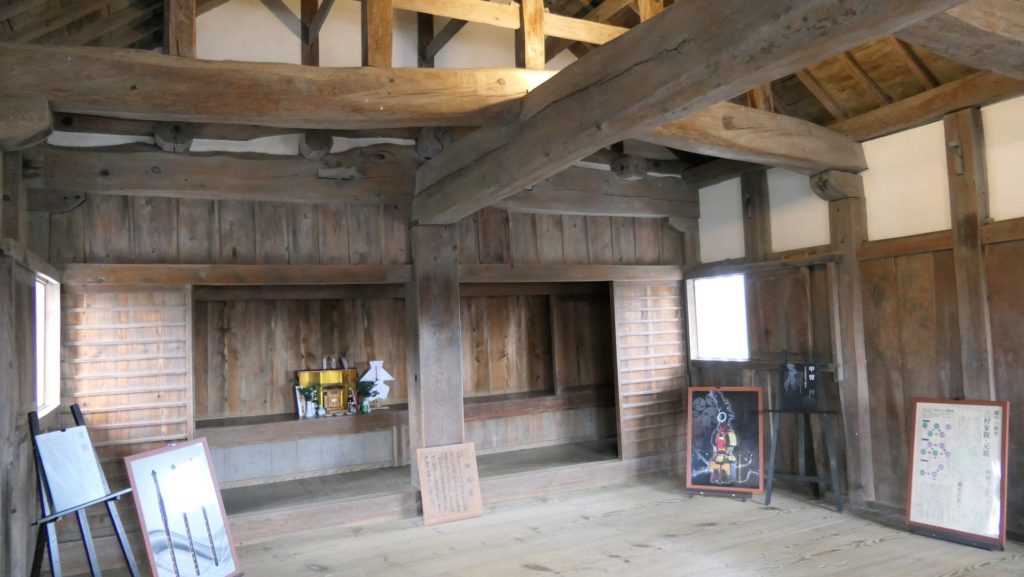
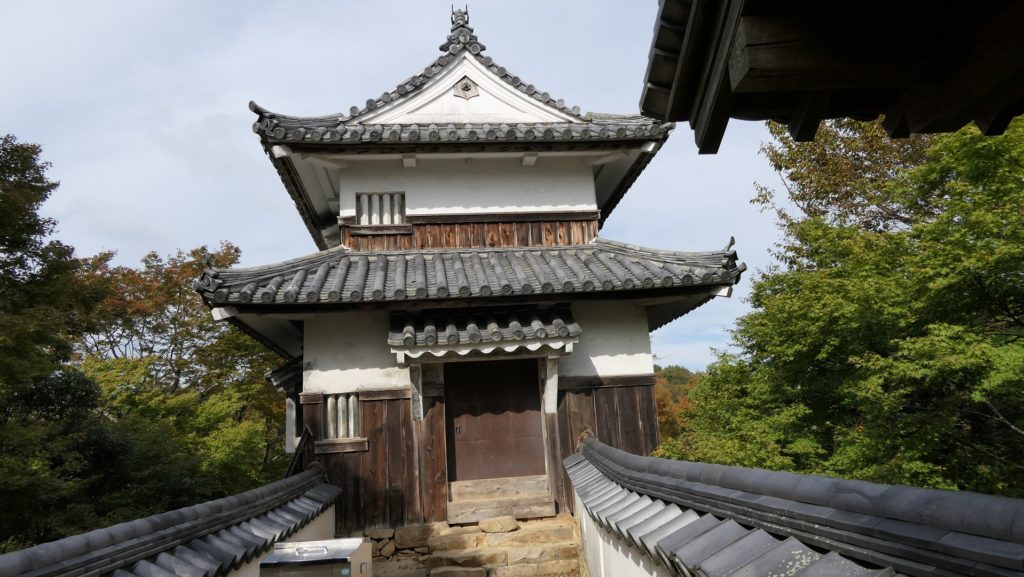
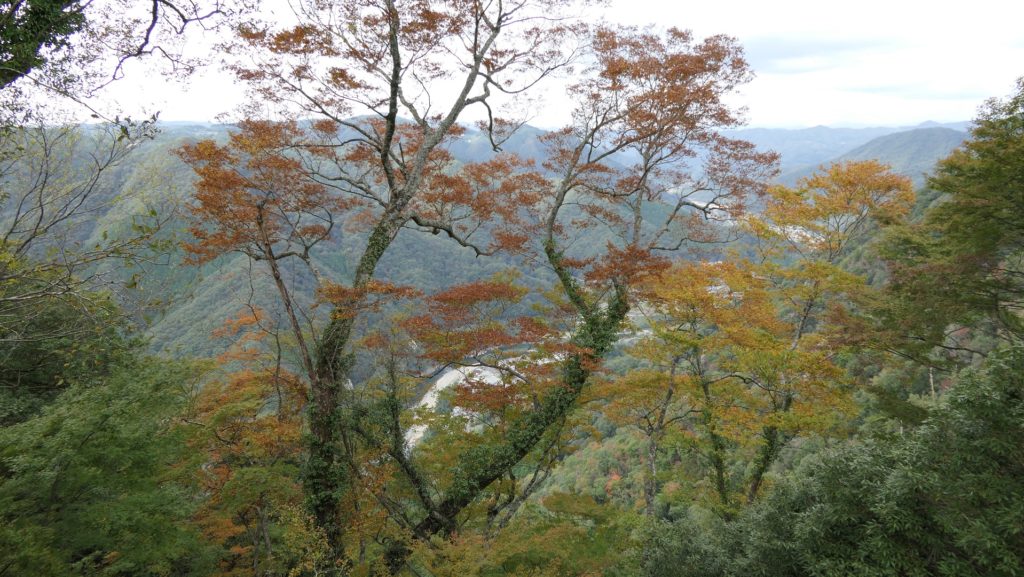
その後~Later History
明治維新後、備中松山城は廃城となり、御根小屋の建物は撤去されましたが、山上の建物はなるがままにされました。そして、荒廃していきます。昭和初期になって、教師であった信野友春が城跡を調査し、結果を刊行しました。そのことにより、高梁町が城の保存に動き出したのです。ついに1956年には重要文化財に指定されました。
After the Meiji Restoration, Bicchu-Matsuyama Castle was abandoned and the buildings in Onegoya were demolished, but the buildings on the mountain were left as it would be. As a result, they were in ruin again. In the first Showa Era, a teacher, Tomonaru Shinano investigated the castle and reported to the public. Because of it, Takahashi Town started to preserve the castle. It was lastly designated as an Important Cultural Property in 1956.
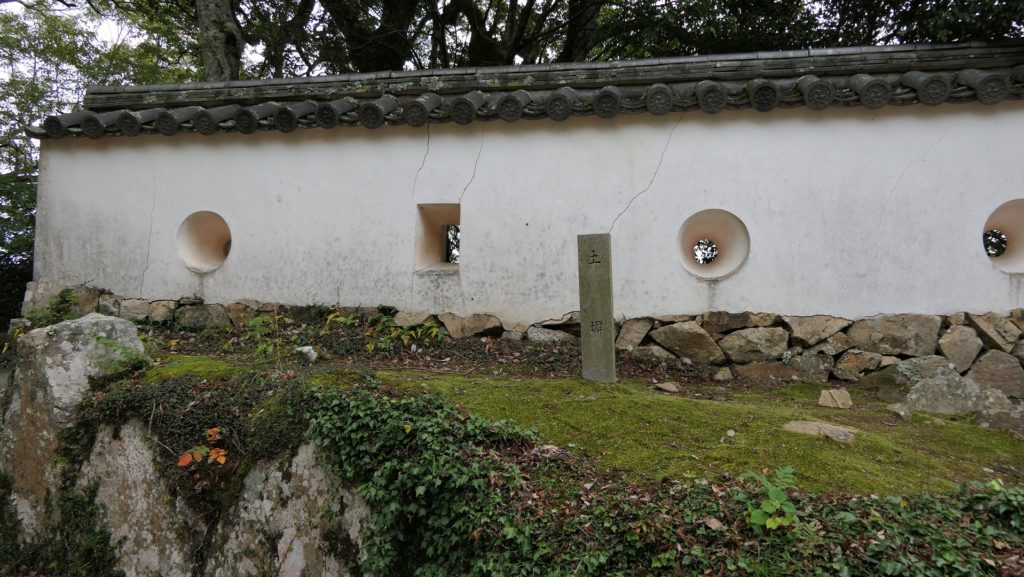
私の感想~My Impression
たくさんの人たちが山上の見事な城を維持するために大変な努力を払ってきたことに驚きました。いつの日か(山麓から山の全ての峰までの)全城域を巡ってみたいです。
It is surprising to know that many people have made great efforts to keep such a great castle on the mountain. I hope I can visit the whole castle area (from the foot to all the peaks of the mountain) someday.

ここに行くには~How to get There
シャトルバス乗り場近くの駐車場まで:
車で行かれる場合は、山陽自動車道賀陽ICから約30分かかります。
バスで行かれる場合は、備中高梁駅から約10分かかります。
東京、名古屋または大阪から備中高梁駅まで:新幹線で岡山駅まで行き、伯備線に乗り換えてください。
To the parking lot near the shuttle bus terminal:
If you want to go there by car, it takes about 30 minutes from the Kayo IC on Sanyo Expressway.
If you want to go there by bus, it takes about 10 minutes from Bicchu-Takahashi Station.
From Tokyo, Nagoya, or Osaka to Bicchu-Takahashi Station: Take the Shinkansen super express and transfer to Hakubi local line at Okayama Station.
リンク、参考情報~Links and References
・備中松山城、高梁市公式ホームページ(Takahashi City Website)
・「歴史街道スペシャル、名城を歩く22、備中松山城」PHP研究所(Japanese Book)
・「よみがえる日本の城5」学研(Japanese Book)





















